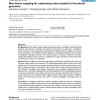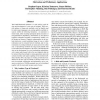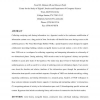2190 search results - page 436 / 438 » Learning Relations Using Collocations |
BMCBI
2005
13 years 7 months ago
2005
Background: Several supervised and unsupervised learning tools are available to classify functional genomics data. However, relatively less attention has been given to exploratory...
BC
2004
13 years 7 months ago
2004
Abstract. The neural circuits of birdsong appear to utilize specific time delays in their operation. In particular, the anterior forebrain pathway (AFP) is implicated in an approxi...
COLING
2002
13 years 7 months ago
2002
The LinGO Redwoods initiative is a seed activity in the design and development of a new type of treebank. While several medium- to large-scale treebanks exist for English (and for...
NRHM
2000
13 years 7 months ago
2000
Collecting, analyzing, and sharing information via a hypertext results in the continuous modification of information content over a long period of time. Such tasks will benefit fr...
NN
2002
Springer
13 years 7 months ago
2002
Springer
The ability to grow extra nodes is a potentially useful facility for a self-organising neural network. A network that can add nodes into its map space can approximate the input sp...



